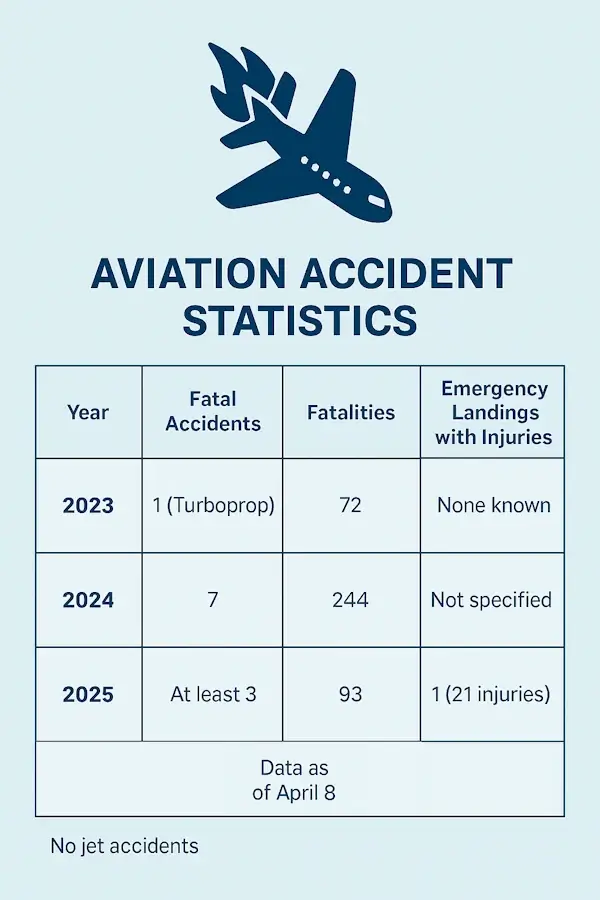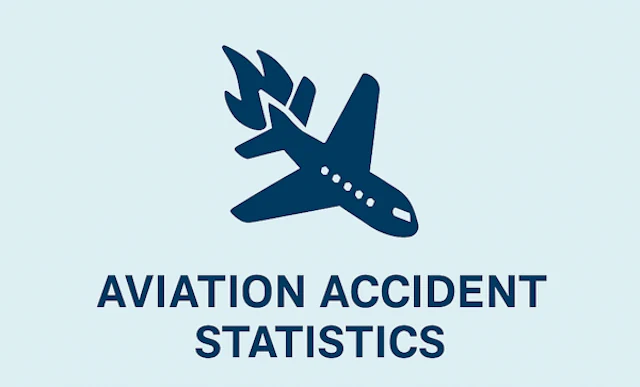Aviation is a marvel of modern engineering—a field where safety is paramount. Yet, even in this highly advanced world, accidents can happen, reminding us of the importance of precise data and continuous improvement.
The year 2025 has kept us on our toes with several high-profile incidents that not only dominated the headlines but also underscored the critical role of flight data. From the tragic mid-air collision of American Eagle Flight 5342 to the dramatic emergency landing of Delta Connection Flight 4819, these events highlight how essential flight data is in unraveling the causes of accidents and revolutionizing aviation safety.
In this post, I’ll take you on a journey through the world of flight data recorders, analyze the biggest aviation incidents of 2025, and show you why these unsung heroes of the skies—often known as “black boxes”—are shaping the future of aviation. Buckle up, it’s going to be an exciting ride!
What Are Flight Data and Why Are They Indispensable?
Flight data are the digital memory of an aircraft. They are recorded by flight data recorders (FDRs) and cockpit voice recorders (CVRs)—two devices that together make up the so-called “black box.” But don’t be fooled by the name: these boxes are bright orange to make them easier to find after a crash. They capture everything that happens during a flight, from altitude and speed to control commands and even the pilots’ conversations.
Why are they so important? Because they reveal the truth. When an aircraft crashes or makes an emergency landing, these data provide investigators with the puzzle pieces to understand what went wrong. In 2025, they played a starring role in analyzing accidents, showing us how to further improve aviation safety. They are robust, survive extreme conditions, and are often the only witness that can still “speak” after an incident.

Tabelle: Zusammenfassung der Vorfälle
| Year | Fatal accidents | Deaths | Emergency landings with casualties | Notes |
|---|---|---|---|---|
| 2023 | 1 (Turboprop) | 72 | None known | Safest year for Jets |
| 2024 | 7 | 244 | Not specified | Higher accident rate than in 2023 |
| 2025 | At least 3 | 93 | 1 (21 injured) | Current year, data incomplete |
Aviation Incidents of 2025: A Look Behind the Scenes
The year 2025 was a wake-up call for the aviation industry. Two incidents stand out in particular: the collision of American Eagle Flight 5342 and the emergency landing of Delta Connection Flight 4819. Let’s take a closer look at these events and find out how flight data propelled the investigations forward.
American Eagle Flight 5342 – A Collision with Fatal Consequences
Imagine this: It’s January 29, 2025, a cold winter day. American Eagle Flight 5342, a Bombardier CRJ700, takes off from Ronald Reagan Washington National Airport. At the same time, a US Army Sikorsky UH-60L Black Hawk helicopter is flying in the same region. What happens next is a catastrophe: the two aircraft collide mid-air. All 67 occupants of the aircraft and the 3 soldiers in the helicopter lose their lives.
The investigators from the National Transportation Safety Board (NTSB) faced a monumental task. But thanks to the flight data recorders, they were able to shed light on the darkness. The aircraft’s black box was recovered on January 30, and the helicopter’s a day later. The data revealed something shocking: the helicopter was flying at an altitude of 278 feet (85 meters)—well above the permitted limit of 200 feet (61 meters) for that airspace. Worse still, the helicopter’s Automatic Dependent Surveillance-Broadcast (ADS-B) system was either malfunctioning or disabled, making it virtually invisible to traffic monitoring.
The aircraft’s Traffic Collision Avoidance System (TCAS) sounded an alarm 19 seconds before the collision, but the low altitude prevented any evasive maneuvers. These insights from the flight data exposed clear weaknesses: the coordination between civilian and military flight paths urgently needs to be revised. Without the precise recordings, this tragedy might have remained a mystery.
Delta Connection Flight 4819 – An Emergency Landing That Narrowly Succeeded
Let’s change the scene: February 17, 2025, Toronto Pearson International Airport. Delta Connection Flight 4819, a Bombardier CRJ900, is on its landing approach. Suddenly, the aircraft touches down hard, tilts to the side, and loses parts of its wing and tail. It’s a moment that takes the breath away from passengers and crew alike. But then, a miracle: all 80 occupants survive, even though 21 people are injured.
The Transportation Safety Board of Canada (TSB) took over the investigation, and the recovered flight data provided the answers. The Flight Data Recorder (FDR) showed that the aircraft landed with a sink rate of 1,100 feet per minute (335 meters per minute)—far above the normal rate. The landing speed was 136 knots (252 km/h), although the reference speed (VRef) should have been 144 knots (267 km/h). The Cockpit Voice Recorder (CVR) also revealed frantic communication in the cockpit, hinting at difficult weather conditions.
These data helped reconstruct the exact circumstances: a combination of human error and adverse conditions led to this near-catastrophe. The findings are now being used to improve pilot training programs.
Other Incidents That Make Us Think
In addition to these two events, there were other accidents in 2025 that underscored the importance of flight data. Bering Air Flight 445, a Cessna 208B Grand Caravan, disappeared in February with 10 people on board. The wreckage was later found, but it remains unclear whether the flight data recorders were recovered. Similarly, Lanhsa Flight 018 crashed into the sea in March—here, the recovered data are contributing to the ongoing investigation.
Each of these incidents shows that flight data are not just a tool for clarification but also a key to preventing future tragedies.
Flugsicherheit im Fokus: Statistiken und Aviation Safety in Focus: Statistics and Progress
The data from accidents like Flight 5342 have already had consequences: new protocols for helicopter flights near commercial routes have been introduced. At the same time, modern technologies like ADS-B enable real-time monitoring that detects potential hazards early. The aviation industry learns from every incident—and that makes it safer than ever.
The Future of Flight Data Safety: A Look Ahead
Technology never sleeps, and that includes the world of flight data. New systems are recording even more precise data and transmitting it in real-time to ground stations. Satellite-based solutions like ADS-B are revolutionizing monitoring, while AI-powered analyses can spot patterns that might escape the human eye.
The vision? An aviation industry where accidents are not just investigated but predicted and prevented. Flight data are the key to this future—an invisible net that protects us all.
Conclusion: Flight Data as the Heart of Modern Aviation Safety
Flight data are more than just numbers and recordings—they are the language of safety. The incidents of 2025, from the collision of American Eagle Flight 5342 to the emergency landing of Delta Connection Flight 4819, have shown us how indispensable they are. As passengers, we can board with peace of mind, knowing that every challenge is used to make the skies safer. Aviation remains a triumph of technology—and flight data are its silent but powerful hero.

